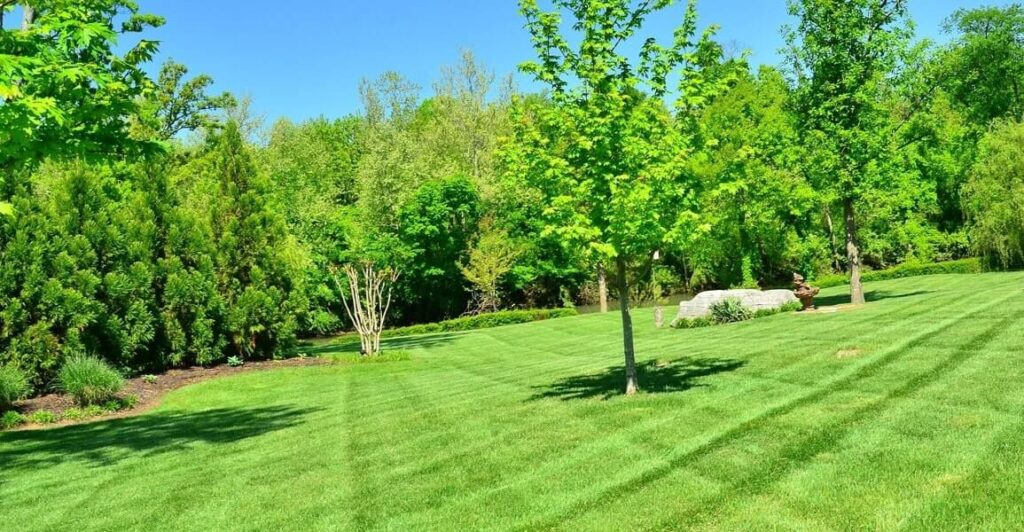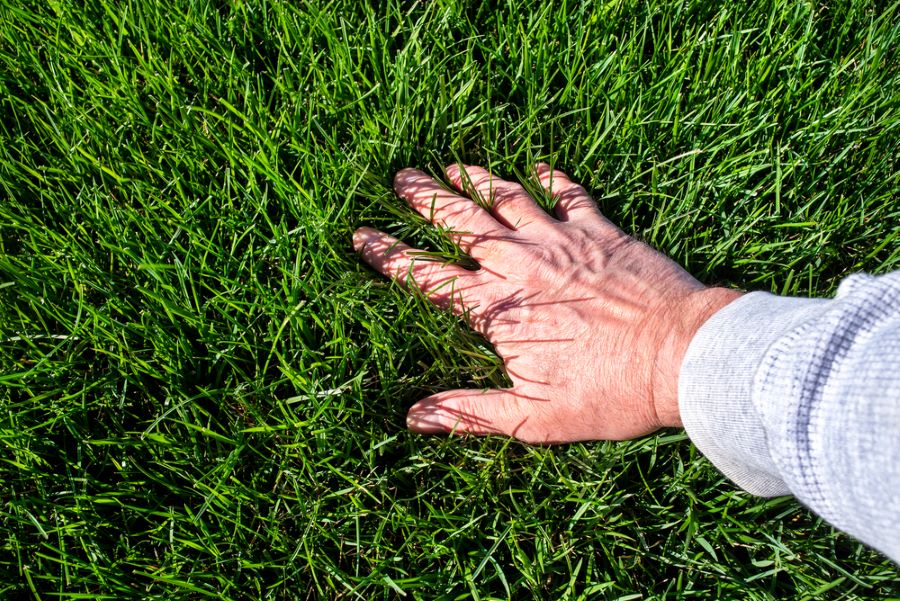An ideal lawn care program will serve you all year round. When it comes to warm season grass, special care and attention must be applied for a healthy and vibrant lawn.
The most crucial aspects of achieving a great lawn are following lawn maintenance best practices and the application of special herbicides and grass fertilizers. While most homeowners may consider these practices, there is one crucial aspect that usually goes overlooked– the type of grass on your lawn.
Grasses are categorized into either cool or warm-season grasses, and both types require different maintenance practices. Deciding what type of grass you have can be tricky, and with our expert lawn knowledge, we can help guide you to knowing the type of grass you have for an effective lawn treatment plan.
In this post, we will cover warm-season grasses and tips for maintaining this type of grass. First, we must understand what warm season grass exactly means.
Table of Contents
What is warm season grass?

Warm-season grasses typically prefer the warmer seasons of the southern U.S. where winters are short and mild, and summers are long. Depending on the type of grass, warm-season grass varieties can grow thick and provide you with a dense lawn.
Interestingly, during the cooler winter months, these warm grasses can turn brown depending on your grass type. Some most widely known warm-season grasses include Bermuda, Zoysia, Centipede, Saint Augustine, Buffalo, Bahia, and Carpet grass.
So, the summer season is already here, and you must be wondering when to fertilize your grass to avoid burning it and give your grass the best conditions for optimal growth.
In this article, we will cover an ideal fertilizing schedule, along with other maintenance topics.
Diseases and pests of warm season grass
Warm-season grasses can be impacted by pests and diseases given humid, warm climates. Fungal diseases, along with chinch bugs, fairy rings, and mole crickets are common issues with these grasses. However, utilizing proper lawn maintenance and care can go a long way in protecting and beautifying warm-season grasses.
It is vitally important to keep your grass mowed to prevent breeding grounds for pests and diseases. If you are unsure of how to treat your lawn for these issues, give us a call, and we will help guide you to an effective solution.
Weeds of warm season grass
Common weeds of warm-season grasses include Kikuyu, goosegrass, dandelion, spurge, and crabgrass. These weeds are aesthetically disruptive and kill the overall appeal of your lawn.
In addition, these weeds are known to compete actively with your lawn grass for moisture, sunlight, and other nutrients.
Another issue with weeds is that they tend to spread at a fast rate and can get uncontrolled if not removed regularly.
You can get rid of weed problems by incorporating herbicides and high-quality fertilizers.
Fertilizing for warm season grass
There are fertilizers available in the market with specific formulations and active ingredients for certain types of weeds and grasses. And you can benefit from those products only if you are familiar with your grass type.
When selecting the fertilizers for your lawn, read the label carefully to ensure that it is meant for your grass type. Also, for specific weeds, make sure you see the weed type listed on the label.
When is the best time to fertilize warm season grass?
You can fertilize the grass from late spring through the entire summer season – after the dormant lawn has greened up. Fertilizing too early will impact leaf growth while dwarfing much-needed root growth. Moreover, early fall can also be a suitable time for fertilization. In simple terms, the phase when your warm-season grass grows is the ideal time to fertilize it. Always avoid the winter season for fertilizing your lawn.
How much fertilizer should you use on warm season grass?
It completely depends on the variety of grass and your soil type. The size of your lawn is also a crucial factor in deciding on the quantity of fertilizer you need. When applying fertilizer, use a spreader set at a spreader rate indicated on the package. It is best to use the spreader from north to south and then from east to west to achieve an even application.
How many times should you fertilize warm season grasses?
Grasses that require fertilization 2-3 times a year include:
- Centipede grass
- Bermuda grass
- St. Augustine grass
- Bahia grass
- Zoysia grass
Again, the best time to apply fertilizer to warm-season grasses is after the lawn is bursting with green to support strong root growth. Typically, the timing is mid-spring through early summer.
How to choose a good fertilizer?
Grass requires essential nutrients to grow properly. Nitrogen, potassium, and phosphorus are among the essential nutrients to apply to your lawn. Therefore, the best fertilizer for your warm-season grass is one that combines a good ratio of all these essential nutrients.
The fertilizer packages must contain a list of three numbers in this form: 16-4-8. You must be wondering what these numbers mean. Well, the numbers refer to fertilizer analysis and indicate the percentage of nitrogen, potassium, and phosphorous nutrients (by weight) in the fertilizer.
How to tackle fungal and other summertime diseases on warm season grass?
You can easily cure and prevent fungal and other summertime diseases by following various lawn maintenance practices. Here are a few tips that can be helpful for you:
- Ensure watering the grass in the morning. Try to avoid watering it in the afternoon and evening. Why? Damp grass at nighttime can cause fungal infection.
- Make use of sharp mower blades. If you use dull blades, the grass can tear, allowing the spores to enter the plant.
- Choose a liquid fungicide to effectively prevent the fungal infection, especially if the nighttime temperature in your area exceeds 70 degrees. The best thing about fungicides is that they are cost-effective, and each application can help protect the grass for approximately 3-4 weeks.
Get the best for your warm season grass treatment
Year-round maintenance of your lawn can help protect your warm-season grass against weeds, diseases, and pests and keep it looking beautiful and healthy throughout the year. However, regular maintenance and keeping up with lawn best practices can be an overwhelming job. Hiring lawn care and maintenance professionals can be a smart choice and give you the time freedom to enjoy family, summer outings, and special times with friends.
If you have any questions or concerns regarding your warm-season grass, give us a call at 919-796-1633, and we’ll help guide you in the right direction.
Happy growing!


